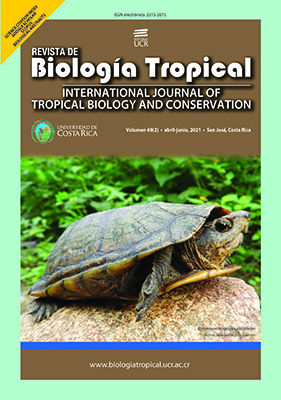Abstract
Introduction: Adequate biological identification is fundamental for establishing integrated pest management programs and identifying the trophic and mutualist relationships that can affect pest population dynamics. Aphids are the main pest of pepper Capsicum spp. (Solanaceae) crops in Southwestern Colombia, due to their role as vectors of viruses. However, the identification of aphid species is complex, limiting the investigations performed to address their interactions with other organisms. Ants and aphids present a facultative mutualistic relationship, that promotes the growth of hemipteran colonies, for this reason, the study of the ecological mutualistic association between aphids and ants is important. Objective: The main objective was to discriminate the aphid species present in commercial crops of Capsicum spp., and to identify the ant community that attends the aphid colonies and its effects on the size of the aphid colonies. Methods: Aphid species, and their ant mutualist, were collected from Capsicum annuum and Capsicum frutescens, in the Cauca valley, Southwestern Colombia. We use the DNA barcoding approach to identify aphid species, and the ants were identified by morphology‐based taxonomy. To evaluate the effect of ant care on the size and structure of aphid colonies, generalized linear models were calculated using as the response variables the total number of aphids for each colony and the proportion of nymphs. Results: The aphid species that attack pepper crops, are: Aphis gossypii and Myzus persicae (Hemiptera: Aphididae), with A. gossypii being the species that interacts with ants (19 ant species). A. gossypii colonies attended by ants had larger sizes and more nymphs per colony, than those not attended. Conclusions: Although the aphid-ant interaction is not species-specific, it is necessary to consider its role in the propagation of viral diseases in peppers and to determine how this interaction may affect regional biological control strategies.
##plugins.facebook.comentarios##

This work is licensed under a Creative Commons Attribution 4.0 International License.
Copyright (c) 2021 Diana Nataly Duque-Gamboa, Anderson Arenas Clavijo, Andres Posso-Terranova, Nelson Toro-Perea



